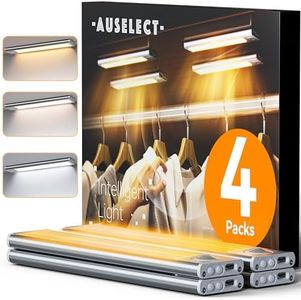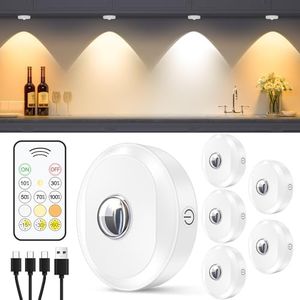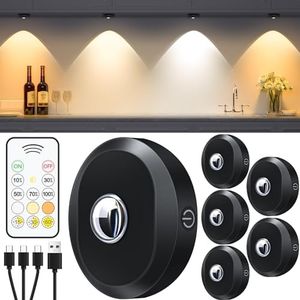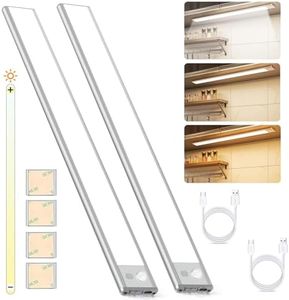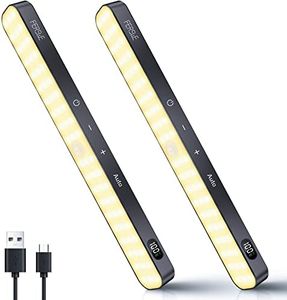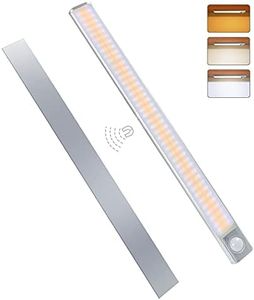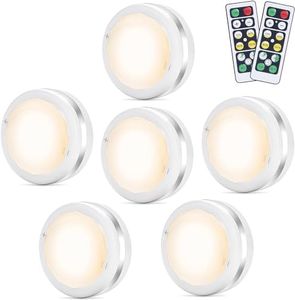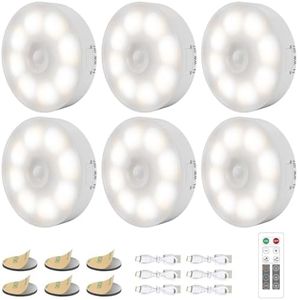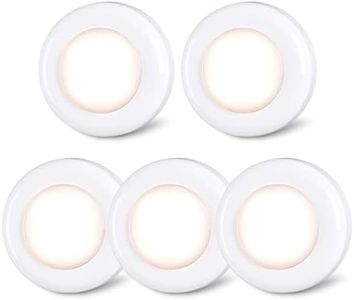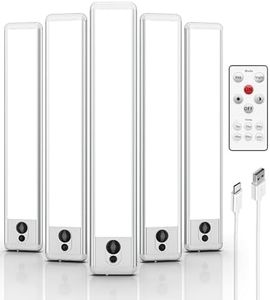We Use CookiesWe use cookies to enhance the security, performance,
functionality and for analytical and promotional activities. By continuing to browse this site you
are agreeing to our privacy policy
10 Best Under-Cabinet Lights
From leading brands and best sellers available on the web.By clicking on a link to a third party's website, log data is shared with that third party.
Buying Guide for the Best Under-Cabinet Lights
Choosing under-cabinet lights can really enhance both the look and function of your kitchen, workshop, or any area where you want extra light beneath cabinets or shelves. The right lighting can help with tasks, create a welcoming atmosphere, and make your space feel larger and brighter. To pick the best one, you’ll want to focus on a few important features that affect how the lights perform, how easy they are to use, and how they’ll look in your space.Brightness (Lumens)Brightness, measured in lumens, tells you how much light the fixtures will produce. This is important because you want enough light to clearly see your work area without being blinded. Under-cabinet lights can range from quite dim to very bright. For accent or mood lighting, lower lumen values (around 100-200 lumens per foot) might be enough. For task lighting where you do prep work or detailed tasks, you’ll want higher values—often 250 lumens per foot or more. Think about how much light you need: if you’re often chopping or reading recipes beneath your cabinets, go brighter; if it’s mostly for ambiance, you can choose a softer option.
Color Temperature (Kelvin)Color temperature describes the color of the light, ranging from warm (yellowish) to cool (bluish), and is measured in Kelvins (K). Warmer lights (2700K-3000K) create a cozy, inviting feel similar to traditional lightbulbs, while cooler lights (4000K-5000K) are more like daylight and can make it easier to see true colors and small details. If your kitchen or work area feels cozy and you want to add warmth, a lower color temperature is ideal. For a clean, crisp look or if color accuracy is important (like with crafts), a higher color temperature is the way to go.
Power SourceUnder-cabinet lights can be plug-in, hardwired, or battery-operated. Plug-in models are easy to install but need a nearby outlet; hardwired lights are connected directly to your home’s electrical system, creating a cleaner look but usually requiring installation know-how or professional help; battery-operated lights are the simplest to install anywhere but may need frequent battery changes. Choose based on where your cabinets are, how comfortable you are with installation, and whether you want the fixtures to be permanent or easily moveable.
Control OptionsControl options cover how you turn the lights on and off or adjust their brightness. Some lights have basic on/off switches, while others include dimmers, remote controls, motion sensors, or compatibility with smart home systems. If you want convenience or to change the mood, dimmable or remote-controlled lights are useful. Motion sensors can be handy for spaces where your hands might be full. Think about your daily habits: if simplicity matters, a basic switch works great; if you want flexibility, look for dimming or smart features.
Installation MethodInstallation methods include adhesive strip, screws, magnets, or clips. Adhesive models are easiest for renters or temporary setups but may not last as long or support heavier lights. Screw-in or clip options offer more security and durability but require more effort and possibly drilling. Consider whether you can (or want to) make permanent changes to your cabinets and how important it is for the lights to stay in place long-term when deciding.
Size and ShapeThe size and shape of under-cabinet lighting fixtures affect both the look and the amount of light provided. There are strip lights, puck lights (round), bars, and even flexible tape lights. Strips and bars offer continuous light, ideal for workspaces, while pucks provide focused spots. Measure your space first, decide whether you want even coverage or accent spots, and pick a style that fits without sticking out or leaving dark areas.
Energy EfficiencyEnergy efficiency relates to how much power your lights use compared to the amount of light they give. LED lights are much more efficient than traditional bulbs, saving you on power bills and lasting longer. Most people should choose LED options, as they don’t need frequent replacement and run cooler—especially important under cabinets near food or heat sources.

